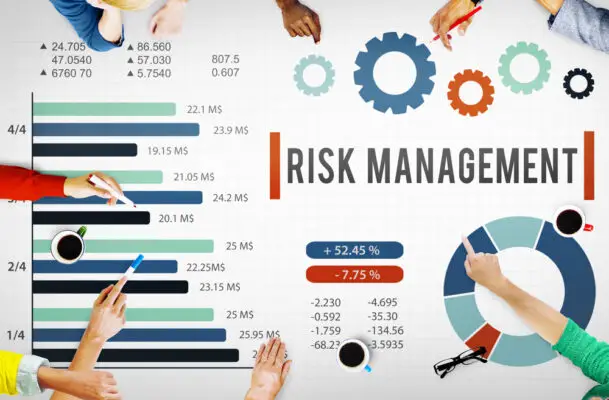Risk attributes are characteristics of a particular exposure to risk. When it comes to making investment decisions, understanding risk is critical. But what exactly is the risk consequence? And what are the different risk attributes that you should be aware of? And one of the best ways to gain that knowledge is by understanding risk attributes.
These include the likelihood of the event occurring, the potential consequences if it does occur, and the level of control that can be exerted over the situation. Taking all of these factors into account makes it possible to get a more accurate picture of the risks involved in any given situation.
The first attribute is the likelihood of an event occurring. This can be difficult to assess, as it is often reliant on probability and statistics. However, it is still important to try to quantify this as much as possible, as it will give you a better sense of how likely something will go wrong.
The second attribute is the potential consequences of an event occurring. This includes both the direct and indirect effects that could result from an adverse event. It is important to consider both the short-term and long-term repercussions of an incident, as this will help you to understand the risks involved fully.
The third attribute is the level of control that can be exerted over a given situation. This will depend on several factors, including the type of event and the available resources.
In this blog post, we’ll break down everything you need to know about risk attributes. We’ll examine how risk attributes work and why they’re so important.
What is Risk?
In finance, risk is the probability that an investment will lose value. When considering investing in something, you want to weigh the potential rewards against the risks. With a higher-risk investment, there’s a greater chance of losing money; however, there’s also a greater chance of making a lot of money. With a lower-risk investment, the potential rewards are also lower. It’s up to you to decide what level of risk you’re comfortable with and to invest accordingly.
Two main types of risk can affect service providers: systematic and unsystematic. Systematic risk is also known as market risk and refers to the inherent riskiness of investing in the stock market. This type of risk can’t be diversified away and affects all investments equally. On the other hand, unsystematic risk is specific to a particular company or industry and can be diversified away by investing in various assets.

What are Risk Attributes?
Risk attributes are characteristics of an investment that can help you gauge its risk level. They can be qualitative (like a company’s management team) or quantitative (like a stock’s beta). Understanding risk attributes enable you to make more informed decisions about where to invest your money.
Why are Risk Attributes Important?
Risk attributes are important because they can help you understand the risks involved with an investment. By understanding the risks, you can make more informed decisions about whether or not an investment is right for you. Additionally, risk attributes can help you compare different investments side-by-side and choose the one with the most favourable risk/reward profile.
Types of Risk Attributes
There are two main types of risk attributes: qualitative and quantitative. Qualitative risk attributes are characteristics that can’t be measured objectively. Examples include a company’s management team, competitive advantages, and reputation. Quantitative risk attributes, on the other hand, can be measured objectively. Examples include a stock’s beta, standard deviation, and Sharpe ratio.
Now that we’ve defined what risk is and discussed the two main types of risk, let’s take a look at some of the different types of risk attributes:
Volatility:
This measures how much an asset’s price fluctuates over time. A higher volatility means an asset’s price will fluctuate dramatically, so it’s considered riskier.
Liquidity:
This measures how easy it is to buy or sell an asset. An asset with high liquidity can be sold quickly and at little cost, while an asset with low liquidity may be more difficult or even impossible to sell quickly.
Beta
This measures how volatile an asset is about the market as a whole. A beta of 1 means that an asset will move in line with the market; a beta higher than 1 means that an asset will be more volatile than the market; and a beta lower than 1 means that an asset will be less volatile than the market.
Alpha
This measures how well an investment performs relative to its benchmarks (i.e., how much “excess return” it generates). A positive alpha indicates that an investment has outperformed its benchmark, while a negative alpha indicates that it has underperformed its benchmark.
Standard Deviation
This measures how much an asset’s returns vary from its mean (average) return over time. A higher standard deviation means that there is more volatility and so more risk.
Sharpe Ratio
This measures an investment’s return relative to its risk (as measured by its standard deviation). A higher Sharpe ratio indicates better returns for the number of risks taken on.
Risks have many aspects that must be considered when characterising the risks appropriately. The term “risk”, which is often used by the general public as primarily negative words, is mainly defined by the effect of uncertainty on the objective described previously.
It combines positive as well as negatively impacted potentials. For better risk management, using the terms risk and positive uncertainty can be a useful and effective tool in identifying and managing the potential for an increased project value.
The Risk Scores for services are determined partly by calculating against the Risk Attributes. Each attribute can also have a weighting effect on its individual value. The overall scores determine Risk Scores.

Adding a Risk attribute
The default choice of risk categories: strategic, operational, compliance, financial and reporting. Display a predefined choice. You have a limited choice of options that you can specify at any moment.
The maximum length of characters is sixty.No changes will occur when a field has been saved. It is indicated by order of the choices under the details tab, where the risk information is recorded.
Business Risk Attributes
The risk rating for businesses is determined by comparing the following criteria with CASB criteria: Safe Haven. The Safe Harbor Principle is an initiative for eligible entities to help to comply with data security regulations. SAS70 / SSAE16 / ISEA3402 SAS 70 (Statement on Auditing Standards No. 70) is an audit criterion for independent auditors.
Managing Risk Quantitatively
For quantitative risk analysis based upon Monte Carlo methods, the risk event causes can be defined separately with the consequences for the corresponding causal risk in the risk definition, whether singular or multivariate.
The result is a valid treatment involving the cause and effect of the causal risk event and the possibility of determining the pretreatment risk assessment for the applicable risks. Alternatively, this allows a comparison of proposed combinations to identify the most cost-benefit combinations of treatments for each risk type to be selected by comparing the results.
Nomenclature and Meta-Language
This context is set up for the rest of the attributes. When users browse risk registrations, they will often see the risk name and its positioning in the registration. In other words, it’s important to describe the risk concisely. This could happen by implementing the risk meta-language, which combines cause and effect aspects of each threat to express the fullness of risks effectively.
Several attributes can affect the riskiness of a stock, including the company’s financial stability, the overall market conditions, and the specific industry. More volatile stocks tend to be riskier, but they also have the potential for greater rewards. Before investing in any stock, it’s important to research the risks and potential rewards to make an informed decision.
Data Risk Attribute
Skyhigh’s CASB platform uses a data risk score to determine an organization’s data security. The score is determined by several factors, including the size of the data, the number of devices accessing the data, and the type of data.
For example, a large organization with many devices accessing sensitive data would have a higher risk score than a small organization with fewer devices and sensitive data. The risk score is used to help organizations determine which data should be protected and which can be accessed without restriction.
User and device risk attributes
Users’ Risk is calculated by SkyhighCASB using the following criteria: attributes and values.
Conclusion
Risk attributes play an important role in investment decision-making by helping investors understand the risks involved with an investment. There are two main types of risk attributes—qualitative and quantitative—and both offer valuable insights into the risks associated with an investment.
Knowing risk attributes is important for all investors because it allows them to make informed decisions about where to allocate their assets. By understanding what risks are involved with different investments, they can choose investments that align with their tolerance for loss and their desired level of return.

Chris Ekai is a Risk Management expert with over 10 years of experience in the field. He has a Master’s(MSc) degree in Risk Management from University of Portsmouth and is a CPA and Finance professional. He currently works as a Content Manager at Risk Publishing, writing about Enterprise Risk Management, Business Continuity Management and Project Management.

